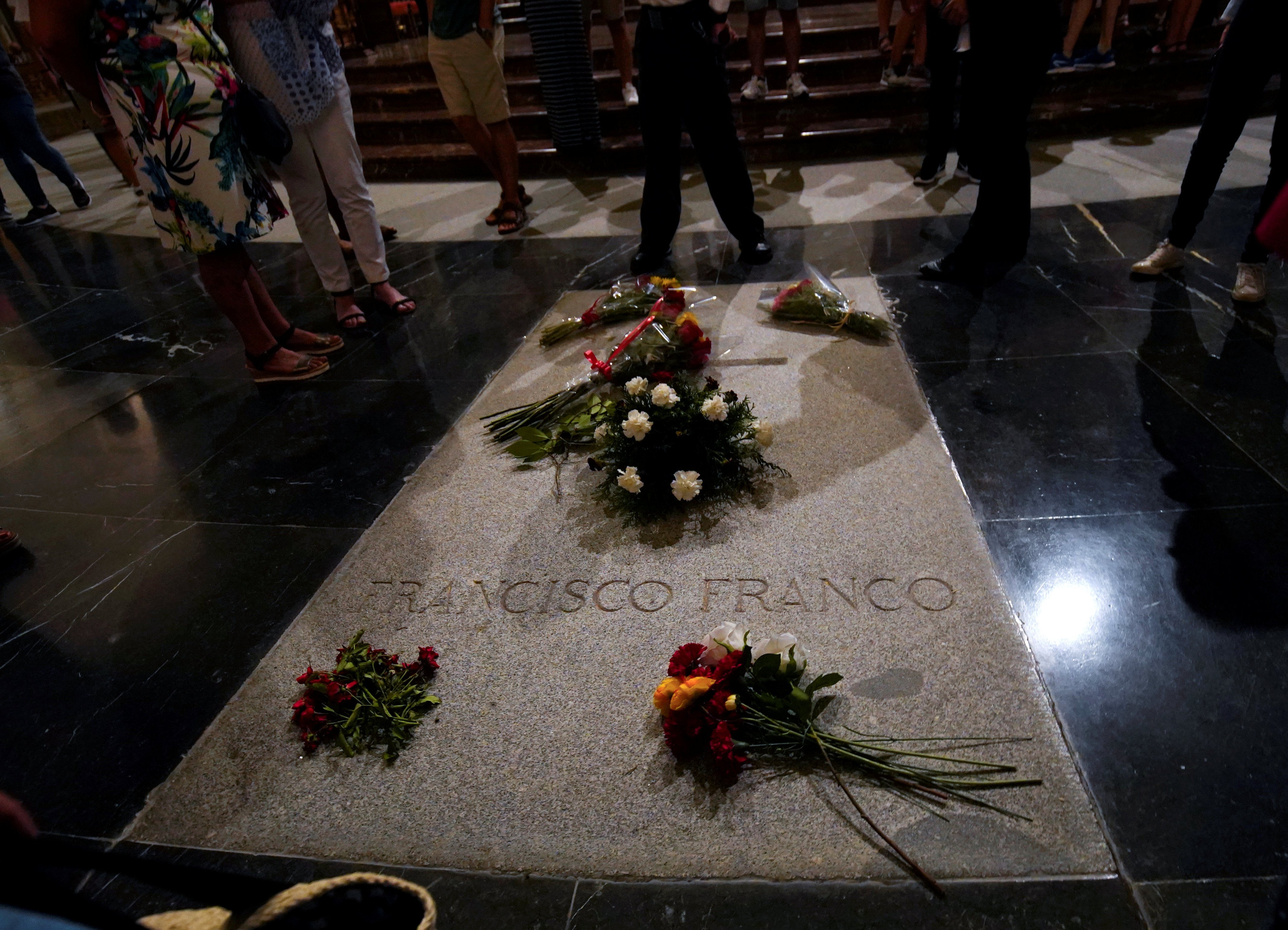It was announced today that, over a year after Spanish prime minister Pedro Sánchez first started trying to exhume dictator Francisco Franco from the Valle de los Caídos, his highly controversial current resting place, it will finally take place this Thursday, 24th October at 10:30am.
Three days before the dictator is moved to El Pardo-Mingorrubio cemetery, the plan is almost finalised. The move will be broadcast live, and the Spanish government has tried to account for every detail and possibility. Justice minister Dolores Delgado will act as the senior notary for the state. The prior of the Valle de los Caídos and the son of Antonio Tejero, the former Civil Guard lieutenant colonel who was the visible face of the attempted coup d'état in 1981, at the end of Spain's transition to democracy, will be among star invitees. With the military involved as well, the procedure will be quite the show. There are plans A, B, and even C. A number of tests will be carried out on Tuesday.
The team on Thursday will be coordinated by the departments of the Spanish prime minister and his deputy. It will involve different departments from levels of the public administration, the Civil Guard and National Police Corps, Group 45 of the Spanish Air Force and a funeral company. Starting at 10:30, the exhumation is expected to take one hour in the best-case scenario to three in the worst. The maximum cost is estimated at €63,061.40 (£54,000; $70,000).
Inside the basilica will be 22 relatives of the dictator, already communicated to the Spanish government, namely his grandchildren and their partners and children. They will be collected from three different points around Madrid for security reasons. The highest-ranking representative of the current authorities will be the justice minister, who will be accompanied by other officials like the secretary general of the prime minister's office, as well as four to six labourer and a forensic surgeon. The coroner's identity is being kept secret, also for security reasons. Also present will be the prior of the Valle de los Caídos, Santiago Cantera, at the family's request.
Once the coffin has been lifted from the vault, prior Cantera will bless the dictator's remains, another request from the family. He will be the sole religious figure present; none of the abbey's Benedictine monks will attend. The coffin will be borne by his family on their shoulders from the altar to the esplanade outside, some 300 metres (1000ft). There will be no military honours, nor a flag on the coffin, by agreement of the Spanish cabinet.
It will be a different matter when he arrives at El Pardo-Mingorrubio cemetery, closer to Madrid. Only the 22 relatives of the dictator and prior Cantera will go into the family mausoleum, where they will be joined by another priest: Ramón Tejero, the son of Antonio Tejero. Tejero and Cantera will offer a private mass. The Spanish government cannot oppose the presence of any flags or other symbols at that point.
Two helicopters
The transit has been planned with backups in mind. Plan A is for a Super Puma helicopter of the Spanish Air Force to carry the body, a suggestion from the Civil Guard for security reasons. A second will be standing by as a plan B. Besides the coffin, the helicopter will carry minister Delgado and one of the dictator's grandchildren, Francis Franco.
A more accurate weather forecast will only be available between 24-48 hours in advance. If conditions don't allow for the helicopters plan to go ahead, there's a plan C: a funeral car. The journey by air would last 10-15 minutes; by land it would take approximately 30-40 minutes, depending on traffic. There will be a large police deployment to avoid the convoy coming across any jams on the route.
Broadcast live, mostly
The transfer will be broadcast live. Only public broadcaster RTVE and four photographers from news agency EFE will be allowed in certain areas, like the Valle's esplanade. RTVE will offer live TV pictures, the EFE staff will offer photographs on a pool system. The broadcast is expected to start around 9:30, when the relatives start to arrive, but that time is flexible.
Within the basilica itself in the Valle and the family mausoleum at the other end, on the other hand, the recording of images is not permitted. Inside the basilica, a marquee will be set up around the tomb as a second layer of security. Everyone inside the basilica will have to pass through a metal detector. Within the marquee will be two relatives, the minister, another representative of the government and the four to six labourers who will lift the 1,500 kg (240 st) stone over the grave.
What's under the ground?
Franco's remains are in a sealed zinc coffin within a wooden casket. The government is working based on different scenarios for how well conserved they are. They believe the most likely situation is that the zinc coffin liner is intact but the wood will be in a bad condition, so they will simply have to place the metal box in a new casket. The grave is covered with concrete and lead, designed to protect the coffin from water damage.
Who'll get the keys?
During the long legal tussle, the Spanish government offered to sell the Franco family the administrative license to the Mingorrubio mausoleum, to have it as their own, not the state's, property. That would have prevented any future government from moving the dictator again. His relatives, however, rejected this offer, so the ownership will remain with the state. It will be closed to the public, with keys being held by the state's heritage office, the local delegation of the Spanish government and the cemetery; when his relatives want to visit they will have to request one.

